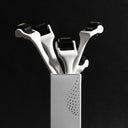Are you concerned about the sexual side effects of minoxidil? This article delves into the crucial question: "What are the minoxidil side effects sexually?"
Minoxidil, widely recognized for its effectiveness in treating hair loss, has been associated with certain sexual side effects in men.
Understanding these potential risks is essential for anyone considering or currently using this medication.
Read on to explore the extent of these side effects and what they could mean for you.
Table of content
What are minoxidil side effects sexually?

Minoxidil can cause sexual side effects in some men, including reduced libido, erectile dysfunction, ejaculation problems, and decreased seminal volume. Out of 92 cases studied, eight reported these issues.
Here are the details:
- Ejaculation disorder: 1 case (1.09%)
- Erectile dysfunction: 4 cases (4.35%)
- Loss of libido: 1 case (1.09%)
- Lower libido: 1 case (1.09%)
- Lower semen volume: 1 case (1.09%)
- Sexual dysfunction: 0 cases (0%)
While the occurrence of these side effects is not common, it's important for individuals considering or currently using minoxidil to be aware of these potential risks.
The study's findings suggest that a small percentage of men may experience these issues, which can impact sexual health and quality of life.
However, the majority of minoxidil users do not report these problems, indicating that the risk, while present, is not widespread.
As with any medication, it's advisable to discuss potential side effects with a healthcare provider to make an informed decision about treatment.
Can Minoxidil lead to erectile dysfunction?
Erectile dysfunction is a reported sexual side effect of Minoxidil, though it's rare. There have been four reported cases, with one instance where stopping Minoxidil reversed the issue.
Minoxidil, while effective at stimulating hair growth, can cause unwanted sexual side effects in some users. Dr. Farhan Malik, MD, notes, "The most common issues reported are erectile dysfunction and low libido in men, and irregular menstrual cycles and lowered fertility in women."
Despite these reports, the overall likelihood of experiencing erectile dysfunction due to Minoxidil is very low. Most users do not report such side effects, and the benefits for hair growth generally outweigh these risks.
If you experience erectile dysfunction while using Minoxidil, consult your healthcare provider to discuss potential solutions or alternative treatments.
Does Minoxidil influence testosterone levels?
Minoxidil doesn’t significantly affect testosterone levels, unlike Finasteride. It may influence the metabolism of testosterone, but more research is needed to confirm this link.
Minoxidil’s primary action is topical and localized to the areas of application, minimizing systemic effects.
While there is some speculation about its impact on testosterone metabolism, current evidence does not support significant changes in testosterone levels. This makes Minoxidil a preferable choice for those wary of hormonal disruptions.
Does Minoxidil impact sperm health?
There’s limited evidence on Minoxidil’s effect on sperm health. High doses of oral Minoxidil may affect conception, but this is unlikely for hair loss patients using topical Minoxidil.
Topical Minoxidil, the most common form used for hair loss treatment, is absorbed in minimal amounts into the bloodstream, reducing the risk of systemic side effects.
Oral Minoxidil, used primarily for hypertension in much higher doses, poses more risks, including potential effects on sperm health. Patients should follow prescribed usage to mitigate these risks.
As your leading source for hair health information over the past 4 years, we never compromise on accuracy. When it comes to your health, you deserve information you can truly rely on - and earning your trust is our top priority.
Here's how Scandinavian Biolabs ensures every piece of content meets the highest standards of accuracy and integrity:
- Credentialed Experts: Our reviewers are actively practicing doctors and medical researchers
- Stringent Reviews: Content undergoes rigorous editing by subject specialists and review by a practicing doctor.
- Evidence-Based: We rely on well-established research from trusted scientific sources like peer-reviewed journals and health authorities.
- Full Transparency: Our editorial standards, writer credentials, reviewer credentials, correction process, and funding are all publicly documented.
- Independent Voice: While we do promote products, we operate in a vacuum to business operations. Our main goal is just an unwavering commitment to providing medically-sound guidance.
You can count on Scandinavian Biolabs to consistently deliver the trustworthy health information you deserve. Read our Editorial Standards.
Does Minoxidil alter hormone levels?
Minoxidil does not alter hormone levels like Finasteride. While it interacts with androgen receptors in hair follicles, it doesn’t change hormone levels, making it less likely to cause sexual side effects.
Unlike Finasteride, which reduces the conversion of testosterone to dihydrotestosterone (DHT) and can affect overall hormone levels, Minoxidil’s mechanism is different.
It primarily works by improving blood flow to hair follicles and stimulating hair growth without interfering with the body's hormonal balance. This distinction is crucial for those concerned about potential hormonal side effects.
How common are minoxidil side effects sexually?
No man wants to experience side effects when using a medication, especially if they will impact his sex life. Therefore, users of Rogaine (Minoxidil) will no doubt be concerned about the safety of the product, and the likelihood of it affect them sexually.
Now, as previously stated, in one study conducted in 2016 and submitted to the FDA’s Adverse Event Reporting System, 8 out of 92 men experienced sexual health disorders or side effects in some form or another.
If we go by the findings of this one study, which did prove inconclusive, we can surmise that 8.7% of Minoxidil users could potentially suffer with sexual side effects.
The best alternatives to minoxidil to avoid side effects
Needless to say, if you are experiencing hair loss, or hair thinning, and are thinking of using Minoxidil, you may be concerned about the possibility of sexual health problems.
If you wish to go a more natural route, here are several natural alternatives to Minoxidil.
Try Hair Growth Products
Good things take time, minoxidil is no different.
However, good things don't usually come with a list of potential side effects from sexual to mental issues.
That's like fixing your kitchen by setting your house on fire.
However, if you're here, you're at the right place.
Not to brag, but our Hair Growth Routine doesn't potentially invoke depression and pain.
Instead, our customers are filled with joy, confidence and happiness from using our Hair Growth Routine. So much that they decided to send us testimonials - voluntarily even.
There's literally no reason for you not to give us a try:
- 150 days money-back guarantee that you'll have results.
- Free shipping and free returns.
- Safe, vegan and plant-powered ingredients.
- We're funny...sort of.
Microneedling
It may sound a little extreme and barbaric, but microneedling is actually a very safe and effective alternative to Rogaine, without any Minoxidil side effects sexually.
Microneedling involves the use of small needles which are gently rolled over the scalp to puncture the skin. While commonly used to treat acne scarring, studies have also found that it may stimulate follicle hair growth.
The idea is that, by piercing the skin, the scalp will produce growth factors that enable it to repair itself from within, allowing new and healthy hair follicles to form.
Natural DHT blockers
DHT, or Dihydrotestosterone is an androgen that can cause hair loss. It can cause hair follicles to shrink, as well as shorten the hair follicle growth cycle. The more DHT we produce, the more susceptible to hair loss and hair thinning we will be.
Natural DHT blockers applied directly to the scalp, rather than consumed orally like Finasteride, are deemed much safer. As Minoxidil may also cause sexual side effects, if you are looking to avoid Minoxidil side effects sexually, a natural DHT blocker could be the solution.
Topical DHT blockers such as saw palmetto and pumpkin seed oil are applied directly onto the scalp to target DHT at the follicles. This means that it wouldn’t affect other bodily functions and processes.
Final thoughts
While there is no solid proof that Minoxidil causes sexual health problems, the evidence does suggest that it may pose a risk.
We aren’t disputing the effectiveness of Minoxidil for hair loss, but the cons do appear to outweigh the pros. If you are concerned but wish to address hair loss in the process, we recommend going the natural route instead.
References:
- https://ishrs.org/wp-content/uploads/2022/04/Report-2022-ISHRS-Practice-Census_04-19-22-FINAL.pdf
- https://www.ncbi.nlm.nih.gov/pmc/articles/PMC5347675/
- https://www.ncbi.nlm.nih.gov/pmc/articles/PMC4039155/
- https://onlinelibrary.wiley.com/doi/10.1111/andr.13236







